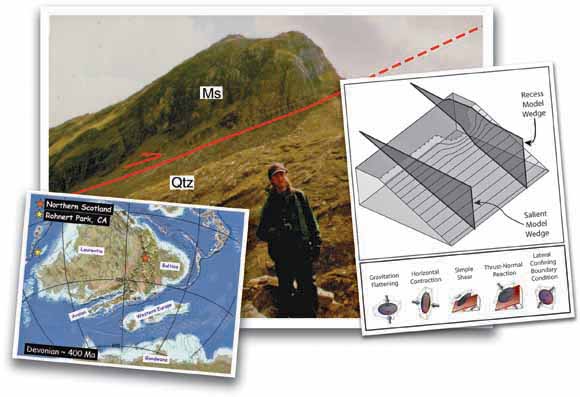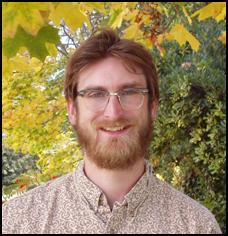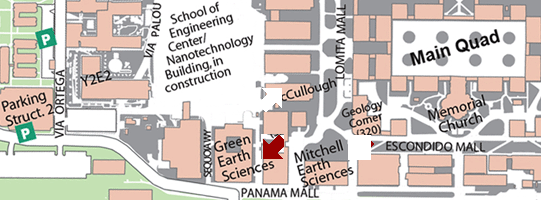
Presents
Location: Stanford University
This will be the 433rd meeting since 1954

It is a long-standing observation that thrust fault traces have arcuate shapes suggesting that thrust faults are, in general, non-planar. Three-dimensional complexities in thrust surface geometry give rise to three-dimensional variations in the displacement field and therefore the incremental and finite strain distribution. The kinematics of a salient-recess pair along the Moine thrust zone, Northwest Scotland, are examined to gain an understanding of how three-dimensional thrust surface geometry effects the strain distribution within thrust zones. In particular, quartz c-axis textures, relict and recrystallized grain shape data, macroscopic field measurements, and microstructural data are all utilized to infer the detailed kinematic patterns along the salient-recess pair. In addition to the field data, a mathematical model was developed to more fully understand the kinematics of thrust sheets moving over non-planar thrust fault surfaces. This kinematics-based model yield results which correlated well with the field observations from the Moine thrust zone.

Matty Mookerjee
Matty Mookerjee attended Oberlin College as an undergraduate where he completed a senior thesis with Steven Wojtal involving three-dimensional strain analysis of the Moine Thrust after a semester aboard at Aberdeen University. He then went right into a Ph.D. program at the University of Rochester where he continued to study the kinematics of the deformation associated with the Moine Thrust under the advisement of Gautam Mitra. He then taught as a Visiting Assistant Professor for two years, one year at Bryn Mawr College and one year at St. Lawrence University. For the past, nearly, six years, he has been an Assistant Professor at Sonoma State University. He continue to study the kinematics of highly strained zones. He has a field area in the eastern Sierra and one in the Bitterroot Mountains. He recently received an NSF grant for an EBSD detector which will be used to study the crystallographic fabrics within these two field areas. Moreover, he has recently started projects involving Finite Element Modeling (FEM) in conjunction with some analogue modeling.
Visit his faculty Web page at http://www.sonoma.edu/users/m/mookerje/
Reservations: The preferred way to make reservations is simply to email Mike Diggles at mdiggles@usgs.gov by May 6, tell him you will attend, commit to pay, and bring your payment to the meeting. Mike always emails a confirmation; if you don’t get one, assume email crashed yet again and email him a second time. A check made to “PGS” is preferred, payable at the meeting.
If you want to pay in advance:
Everyone (including Stanford folks now) Please make dinner reservations by May 6. Contact Mike Diggles, at U.S. Geological Survey, 345 Middlefield Road, MS-951 Menlo Park, CA 94025, Tel.: (650) 329-5404. Send check made out to “PGS” to Mike.
Dinner and the social hour is $35.00; this includes $5 that we use to help pay for students who are only $8.00 (also partially subsidized thanks to the School of Earth Sciences, Stanford University (Note, no-show reservations owe the full price).
Doris, whose wonderful crew prepares our meals, asked that we let you know that people who are late RSVPing and people who show up without a reservation will be welcome but that they will be eating on paper plates with plastic utensils (food supply permitting).
Dues for Academic Year 2011-2012 ($10.00) should be sent to Mike Diggles, U.S. Geological Survey, 345 Middlefield Road, MS-951, Menlo Park, CA 94025. Mike’s phone: (650) 329-5404.
Officers: Mireya Berrios, President; Joe Colgan, Vice President; Mike Diggles, Secretary-Treasurer; Elizabeth Miller, PGS Stanford University Coordinator

Date created: April 20, 2012
Last modified: April 20, 2012
Created by: Mike Diggles, Webmaster-Secretary-Treasurer, PGS.